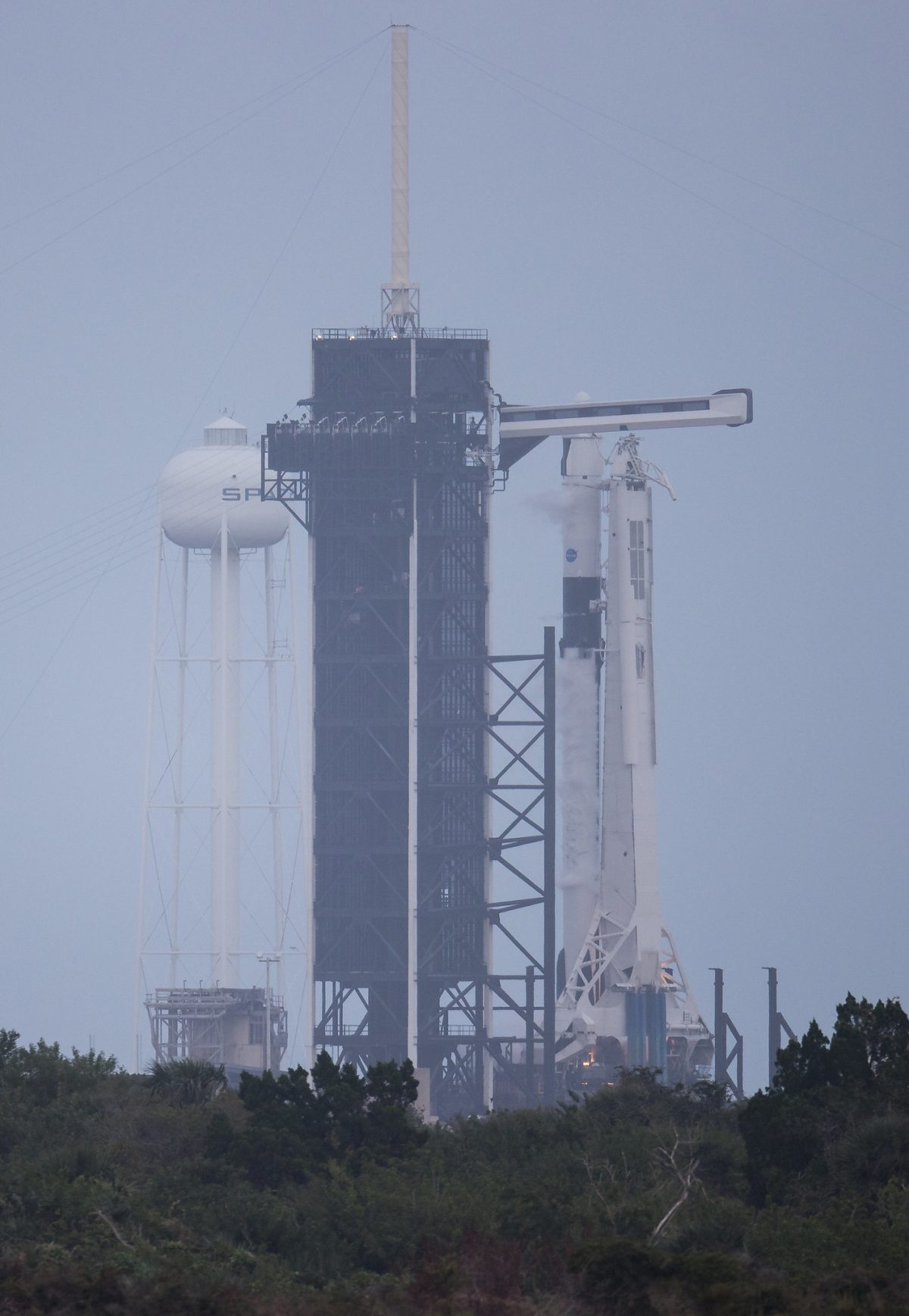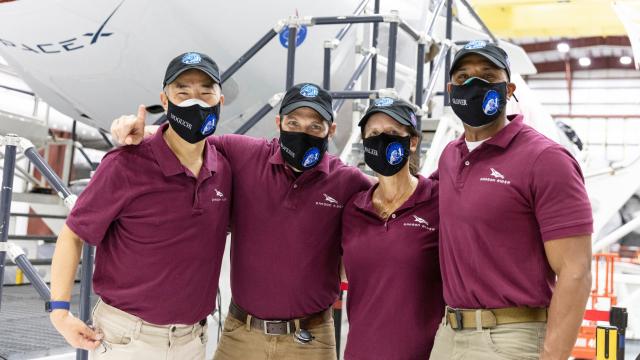NASA and SpaceX are targeting this Saturday for the launch of four astronauts to the International Space Station, in what is expected to be the first of many regularly scheduled crew flights to space from U.S. soil. Here’s what you need to know about this historic mission and how you’ll be able to watch.
NASA’s Commercial Crew era, after nine long years, is finally upon us.
Not since the retirement of the Space Shuttle Program in 2011 has the United States been able to independently launch astronauts to orbit without the help of outside partners, namely Russia. The Demo-2 mission from earlier this year, in which NASA astronauts Robert Behnken and Douglas Hurley were delivered to orbit aboard a SpaceX CrewDragon spacecraft, was exactly that — a demonstration. The upcoming launch is the real deal, and the beginning of regular crew flights to the ISS from America.
The launch of Resilience, as this particular CrewDragon is named, is scheduled for November 15 at 11:49 a.m. AEDT from Launch Complex 39A at NASA’s Kennedy Space Centre in Florida. You’ll be able to watch it live right here, compliments of NASA’s official stream.
If the launch has to be postponed, NASA and SpaceX will try again on November 16 at 11:27 a.m. AEDT. The U.S. Air Force is currently predicting a 70% chance of favourable weather on Saturday. Cumulus clouds and precipitation churned by Tropical Storm Eta are the primary concerns.
Earlier this week, NASA and SpaceX completed the certification of the CrewDragon-Falcon 9 combo, which is now the first human-rated commercial space system in U.S. history. And yesterday, mission planners completed a successful Falcon 9 static fire test, in which the rocket’s nine Merlin first-stage engines were fired for seven seconds, so it looks like we’re ready to rock. The Falcon 9 first stage rocket will attempt to land on the drone ship Just Read the Instructions, which will be stationed in the Atlantic ocean.

The CrewDragon crew — NASA astronauts Mike Hopkins, Victor Glover, and Shannon Walker, and JAXA astronaut Soichi Noguchi — will arrive at the ISS some 11 hours after launch, where they’ll join Expedition 64 crewmembers Kate Rubins, Sergey Ryzhikov, and Sergey Kud-Sverchkov.
At seven crew members, the ISS will be maxed out in terms of occupancy, according to the Planetary Society. They’ll need to get cosy and get along — Expedition 64 is scheduled to last for six months (suddenly wondering if deodorant is allowed in space).
They have a mountain of scientific and technical work ahead of them. In addition to delivering new science hardware to the orbital outpost, the crew will study ways to improve diets in space, investigate astronaut brain and heart function, grow some radishes, and work with biomining microbes (as part of an ongoing experiment we covered earlier this week), among other science projects. They’ll also test components destined for the upcoming Artemis Moon suit, called xEMU.
Fingers crossed that all goes well and that this crew of seven won’t be hampered by ongoing issues with the ISS, whether it be air leaks, busted toilets, or malfunctioning ovens. Could be a long six months.
